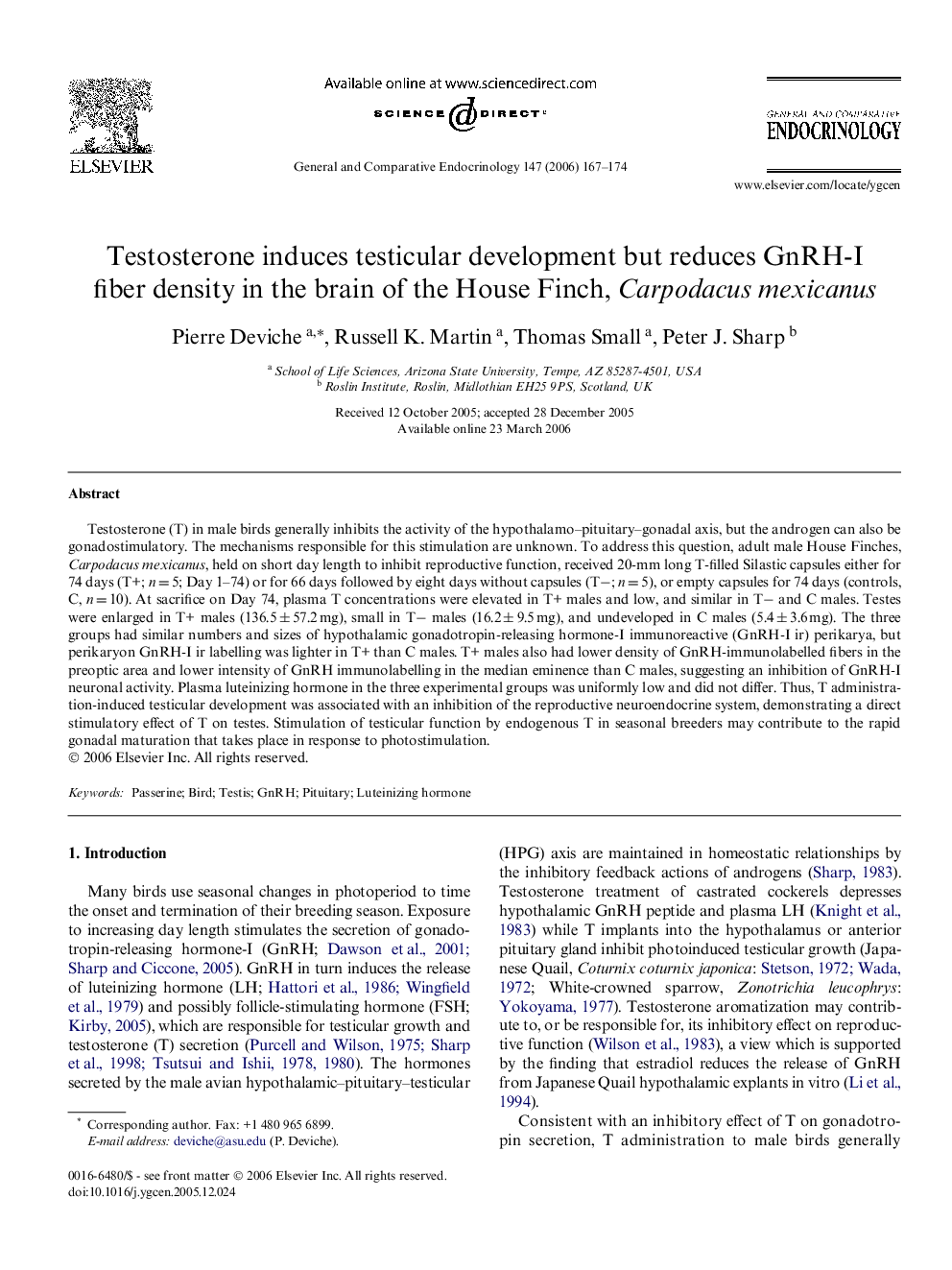| Article ID | Journal | Published Year | Pages | File Type |
|---|---|---|---|---|
| 2802263 | General and Comparative Endocrinology | 2006 | 8 Pages |
Abstract
Testosterone (T) in male birds generally inhibits the activity of the hypothalamo-pituitary-gonadal axis, but the androgen can also be gonadostimulatory. The mechanisms responsible for this stimulation are unknown. To address this question, adult male House Finches, Carpodacus mexicanus, held on short day length to inhibit reproductive function, received 20-mm long T-filled Silastic capsules either for 74 days (T+; n = 5; Day 1-74) or for 66 days followed by eight days without capsules (Tâ; n = 5), or empty capsules for 74 days (controls, C, n = 10). At sacrifice on Day 74, plasma T concentrations were elevated in T+ males and low, and similar in Tâ and C males. Testes were enlarged in T+ males (136.5 ± 57.2 mg), small in Tâ males (16.2 ± 9.5 mg), and undeveloped in C males (5.4 ± 3.6 mg). The three groups had similar numbers and sizes of hypothalamic gonadotropin-releasing hormone-I immunoreactive (GnRH-I ir) perikarya, but perikaryon GnRH-I ir labelling was lighter in T+ than C males. T+ males also had lower density of GnRH-immunolabelled fibers in the preoptic area and lower intensity of GnRH immunolabelling in the median eminence than C males, suggesting an inhibition of GnRH-I neuronal activity. Plasma luteinizing hormone in the three experimental groups was uniformly low and did not differ. Thus, T administration-induced testicular development was associated with an inhibition of the reproductive neuroendocrine system, demonstrating a direct stimulatory effect of T on testes. Stimulation of testicular function by endogenous T in seasonal breeders may contribute to the rapid gonadal maturation that takes place in response to photostimulation.
Related Topics
Life Sciences
Biochemistry, Genetics and Molecular Biology
Endocrinology
Authors
Pierre Deviche, Russell K. Martin, Thomas Small, Peter J. Sharp,
